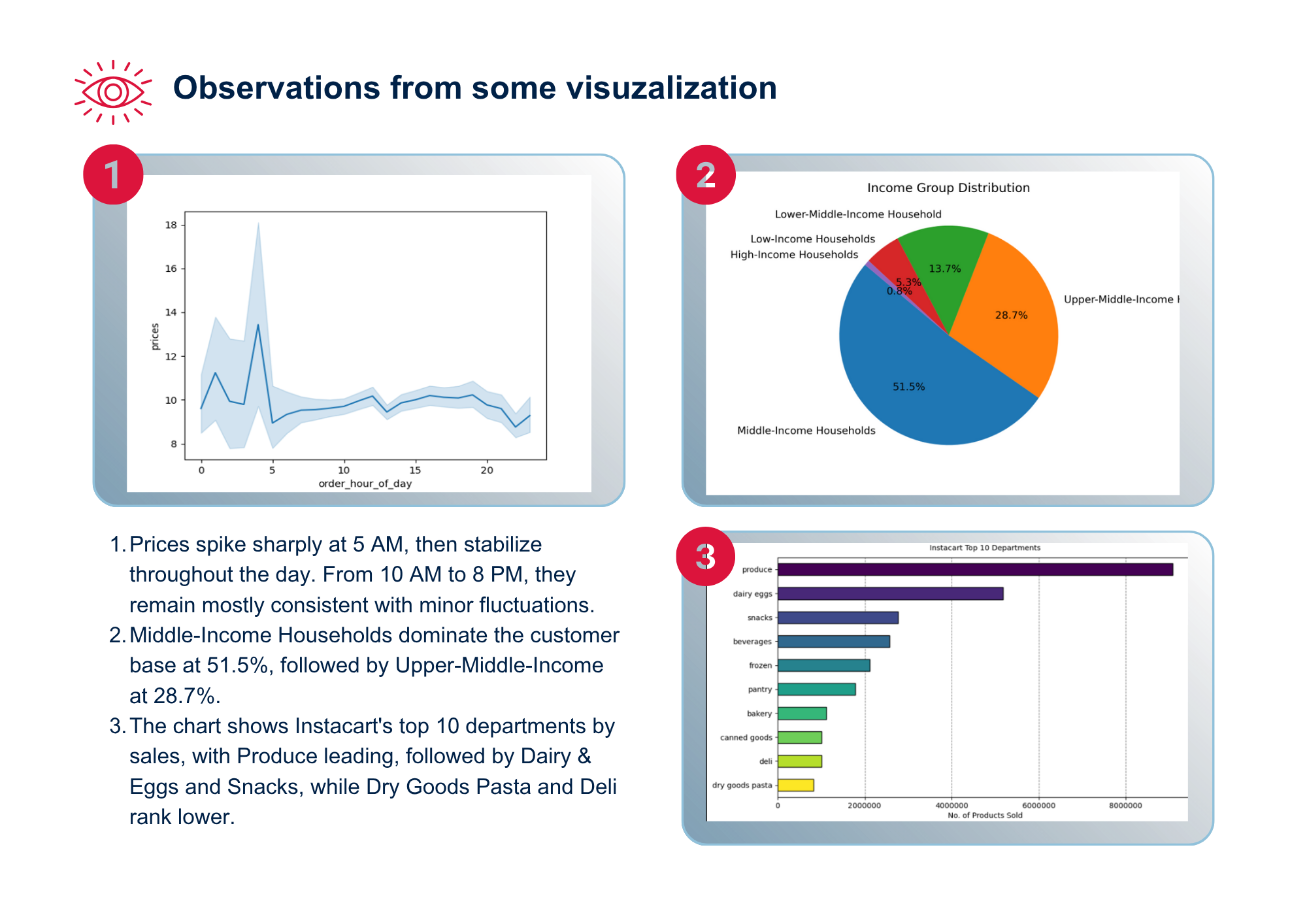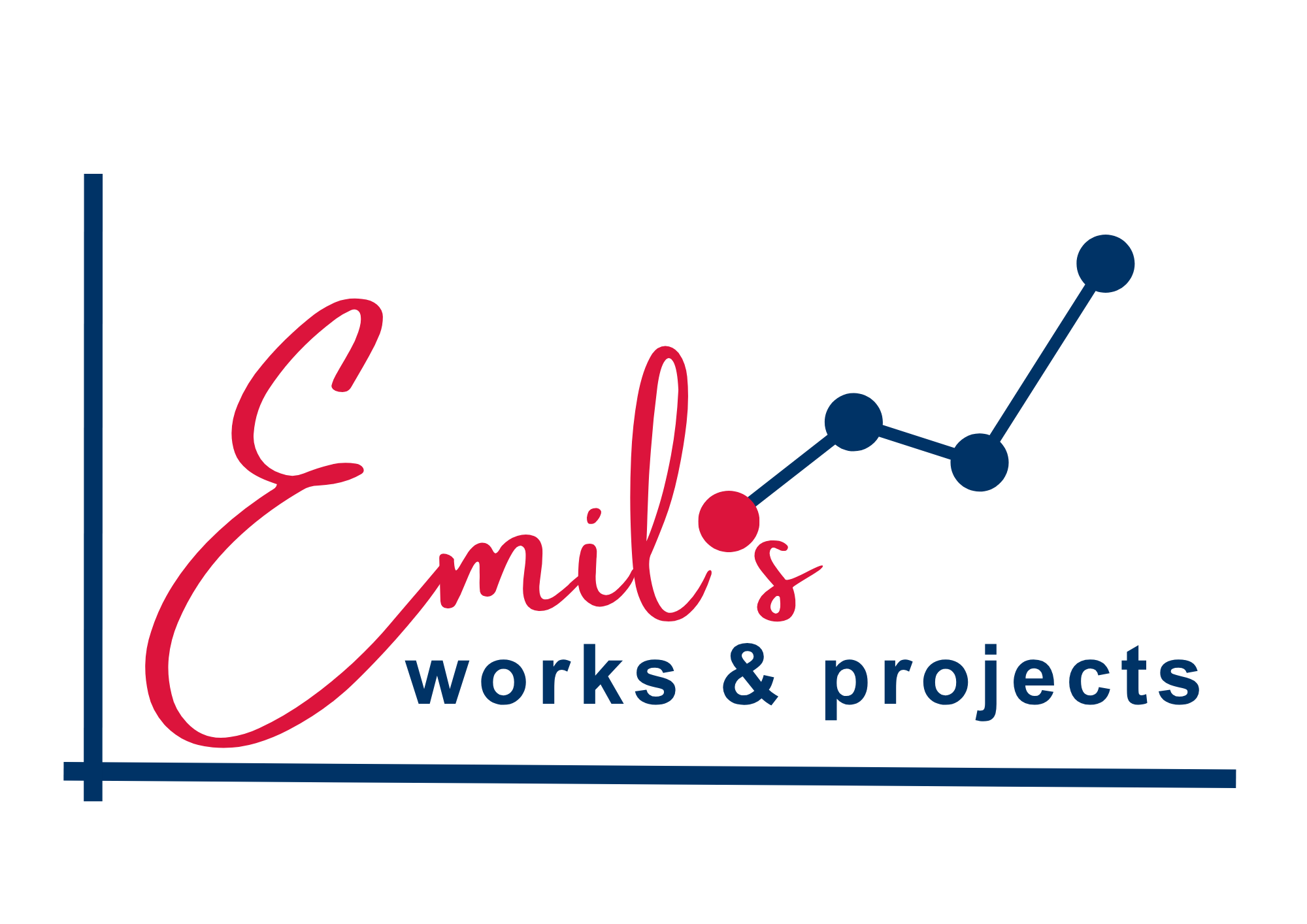Instacart Grocery Basket Analysis
A Data-Driven Approach to Customer Segmentation & Ad Optimization
Problem Overview:
This project aimed to develop a data-driven strategy to enhance Instacart’s marketing efforts by analyzing customer purchasing behavior. The goal is to improve ad scheduling, optimize pricing strategies, and personalize customer targeting. Key focus areas included identifying peak shopping times, segmenting products by price range, and understanding customer demographics to drive better engagement and sales.
This Data Analytics Bootcamp project simulated a real-world e-commerce scenario, showcasing how data analytics enhances digital marketing and customer segmentation. As a Data Analyst, I:
- Preprocessed Data: Ensured accuracy of Instacart sales and customer data.
- Conducted Analysis: Performed statistical tests and exploratory analysis to identify sales patterns.
- Visualized Data: Created charts and graphs to illustrate order behavior.
- Generated Insights: Provided actionable recommendations for Instacart’s marketing strategies.
The Problem Statement
Instacart faces significant challenges in understanding customer purchasing behavior and optimizing marketing efforts. With a vast and diverse customer base, it is crucial to identify patterns in order frequency, spending habits, and product preferences to ensure effective ad targeting and pricing strategies. Without a data-driven approach, marketing efforts may lack precision, leading to inefficient ad spend and missed opportunities for customer engagement.
Key Challenges for Instacart:
- Identifying peak order hours for better ad placement.
- Understanding high-value purchase trends.
- Grouping products into meaningful price ranges.
- Segmenting customers based on demographics and shopping habits.
Research & Planning
Stakeholders wanted to understand their diverse customer base and purchasing behaviors to refine their targeted marketing approach. The project required analyzing key datasets to identify customer segmentation opportunities and sales trends.
Approach
- Python-Based Analysis: Used pandas, NumPy, matplotlib, seaborn, and scipy for data processing.
- Data Cleaning & EDA: Removed duplicates, handled missing values, and conducted initial trend analysis.
- Business Insights: Identified peak sales trends, customer loyalty patterns, and pricing strategy optimizations.
- Visualization & Reporting: Created graphs, charts, and summaries to effectively present findings.
- Structured Workflow & Deliverables: Organized datasets systematically, followed industry standards for data handling, and compiled the final report in Excel as requested.


Key Lessons Learned
- Data Cleaning is Essential: Ensures accurate insights.
- Visualization is Powerful: Simplifies complex trends for stakeholders.
- Customer Segmentation Improves Business: Data-driven marketing leads to better customer engagement.
Final Thoughts
Data analytics refines Instacart’s marketing by revealing purchasing patterns, optimizing ads, and improving pricing. This analysis helps tailor promotions, enhance segmentation, and boost sales.
Expanding these insights can improve recommendations and enable dynamic pricing, keeping Instacart competitive. This project underscored the power of data-driven decisions in business growth and customer satisfaction.
